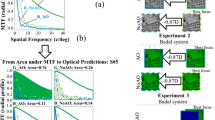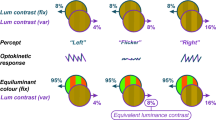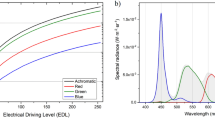Abstract
THERE is a slight inaccuracy in your report of my communication of May 12th to the Physical Society, wherein I am made to affirm that a blue object and a red object cannot both be in focus at once unless the blue object be the more distant. The next sentence of your report, and indeed the whole tenor of my communication imply the reverse condition that the blue rays should come from the less distant source. The dispersion of the eye takes place in the same sense as its refraction; hence the adjustment of the eye to focus may be the same for blue rays proceeding from a body near the eye as for red rays proceeding from an indefinitely distant luminous source; as, indeed, Fraunhofer proved half a century ago.
This is a preview of subscription content, access via your institution
Access options
Subscribe to this journal
Receive 51 print issues and online access
$199.00 per year
only $3.90 per issue
Buy this article
- Purchase on SpringerLink
- Instant access to full article PDF
Prices may be subject to local taxes which are calculated during checkout
Similar content being viewed by others
Author information
Authors and Affiliations
Rights and permissions
About this article
Cite this article
THOMPSON, S. Chromatic Aberration of the Eye. Nature 16, 84 (1877). https://doi.org/10.1038/016084c0
Issue date:
DOI: https://doi.org/10.1038/016084c0



